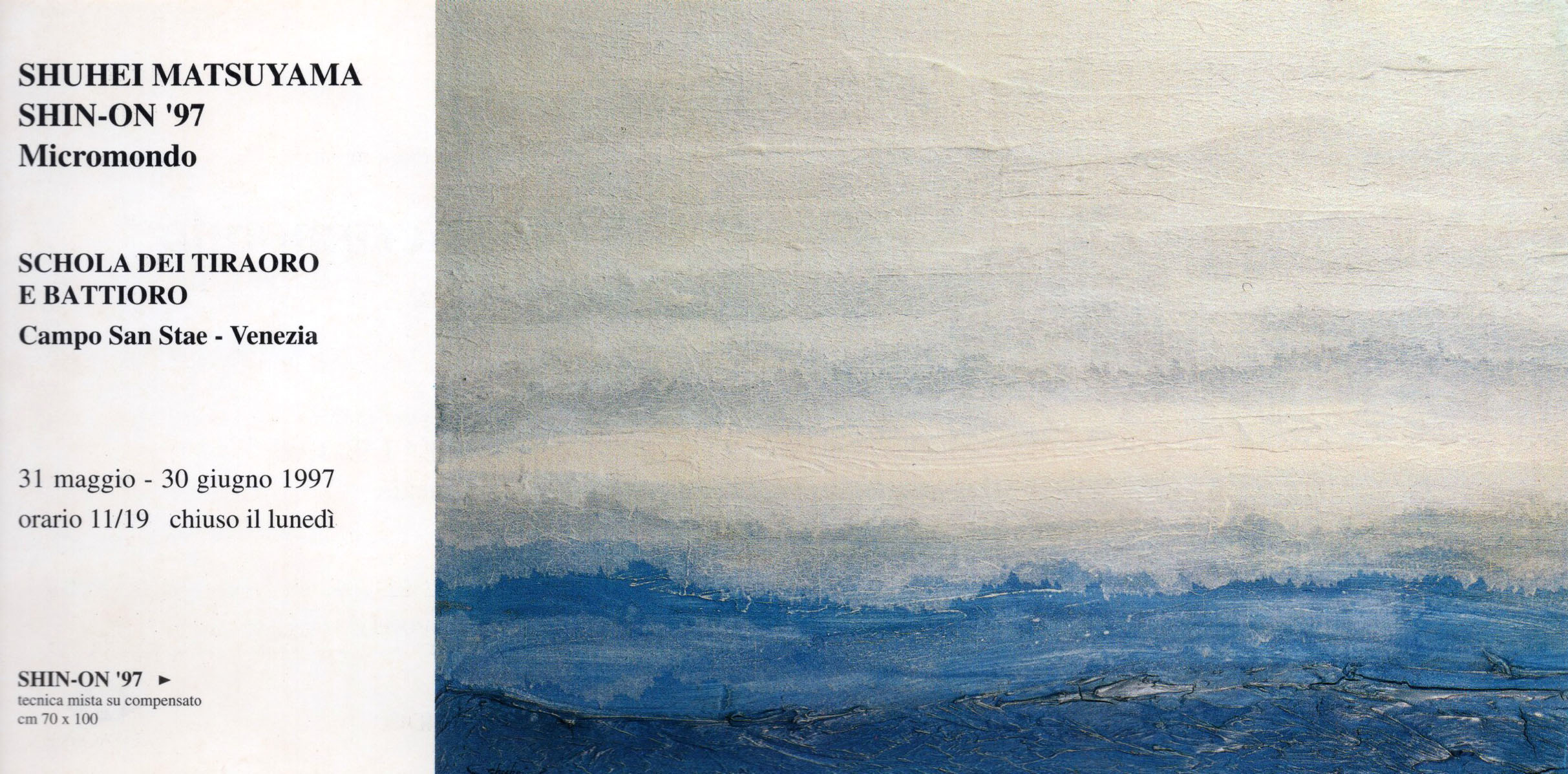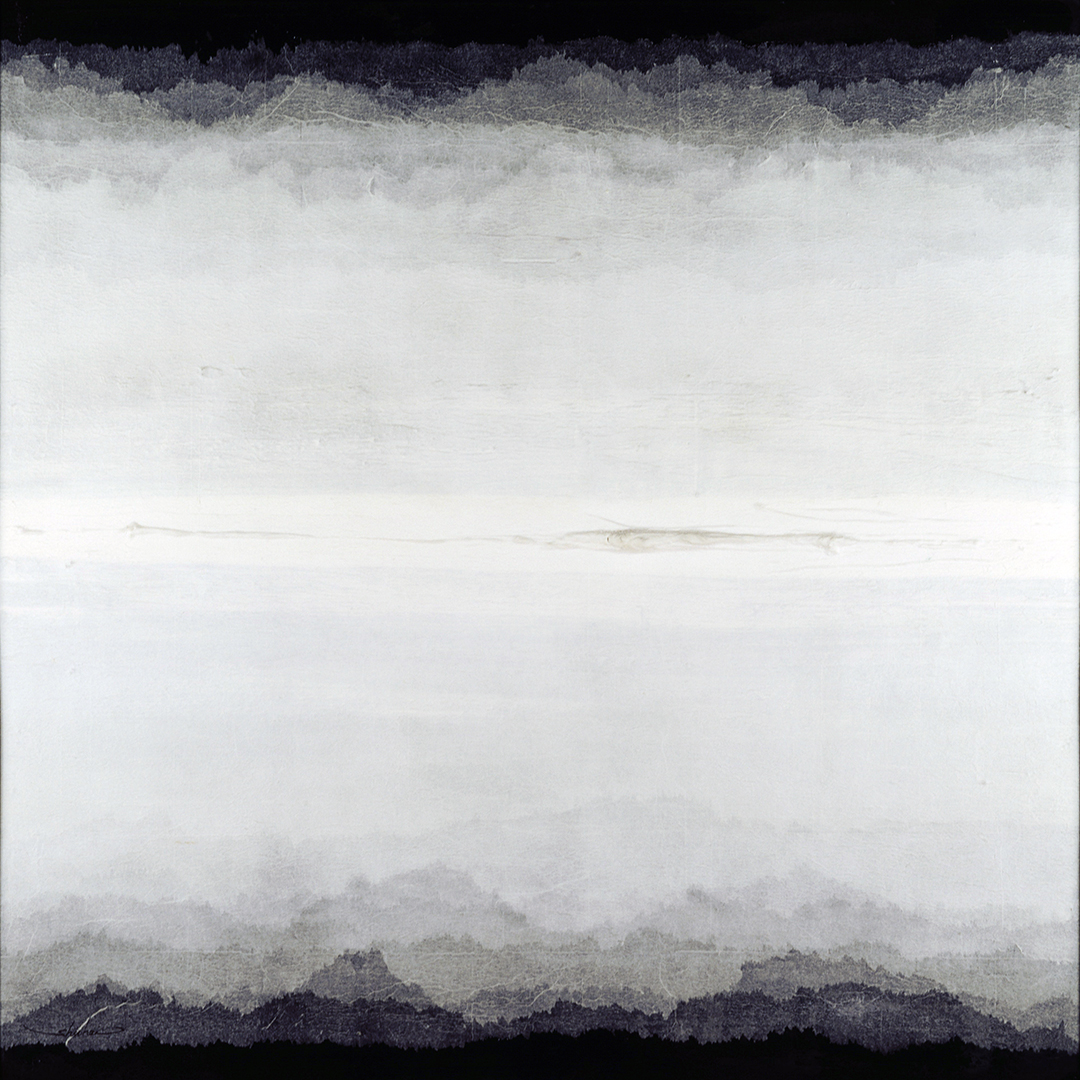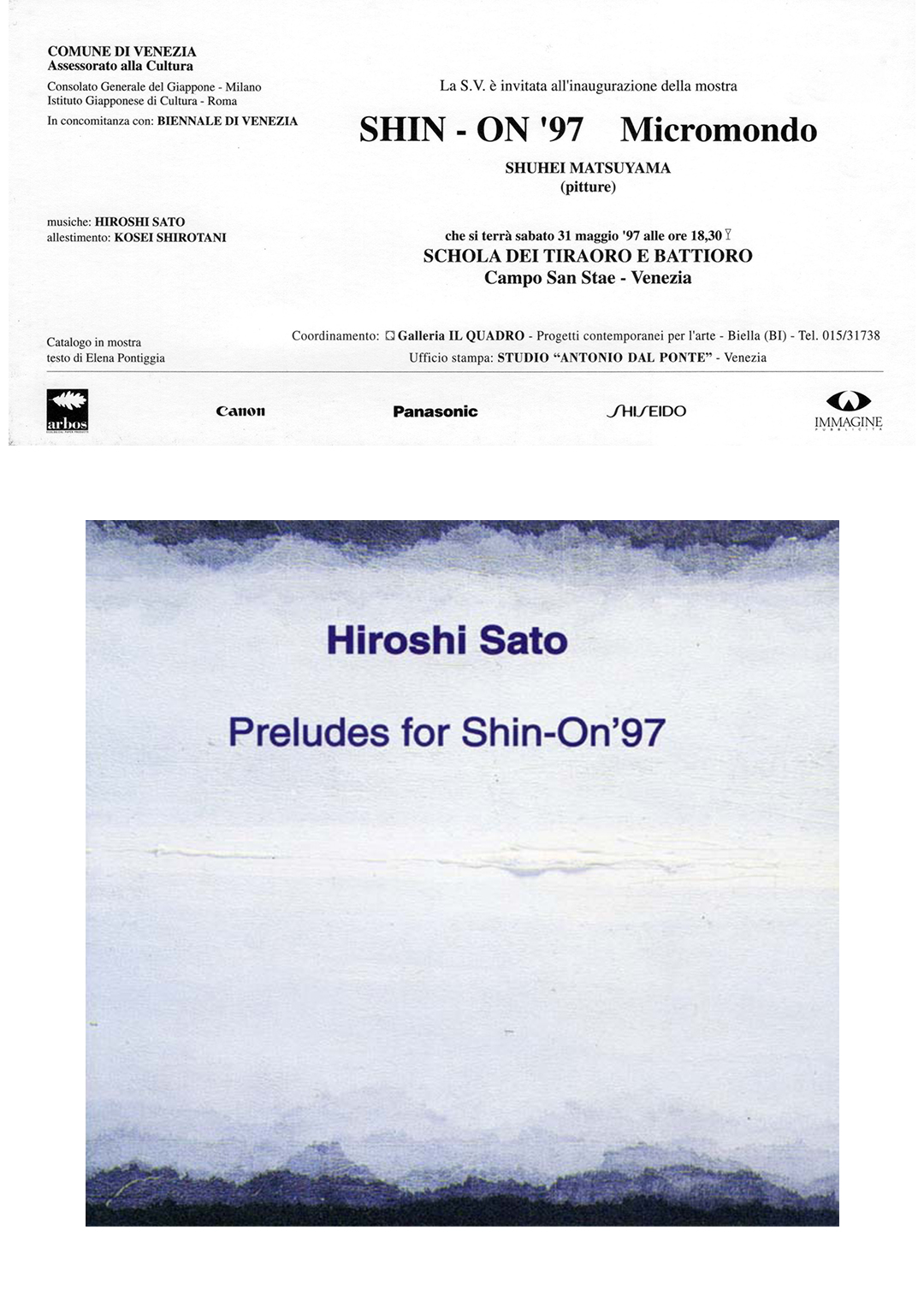TMPST - Hiroshi Sato
Preludes for Shin-On
- digital music album -
Preludes for Shin-On
"Preludes for Shin-On" was created as the ornamental music for the "SHIN-ON - MICRO MONDO" exhibition by painter Shuhei Matsuyama, held in Venice, Italy in 1997, and the CD containing the tracks, "Preludes for Shin-On'97," was sold exclusively at the exhibition. In 2024, a newly recorded and edited digital album, "Preludes for Shin-On," was produced and began streaming.

Non-disturbing music
Shuhei Matsuyama paints images of sound in his paintings titled "SHIN-ON". If Japanese characters are substituted for "SHIN-ON", various words can be found or created, such as New Sounds(新音), Heart Beats(心音), Deep Sounds(深音), Trembling Sounds(震音), Forest Sounds(森音), and the Sound of believing(信音), etc.. These sounds are depicted in his works, and they play inaudible sounds.
When I was asked to create music to be played in the exhibition space, the first thing that puzzled me was, "Is music even necessary with his works that depict sounds?" While looking at the images of his paintings that I was given as reference material, I listened to various music, including my own past works, but it just never felt right. Any music seemed to make his paintings uncomfortable. I felt more and more that "it would be better if there was no music."
I was at a loss as I couldn't find any inspiration for my creation and I played some non-music CD containing sounds of nature(sounds of waves and wind at the beach) to change my mood. As I listened to the sound and looked at the images, I felt a slight discomfort at the vividness of the nature sounds, but I realized that the sound did not interfere with the artwork being displayed in the images. If anything, it seemed to resonate slightly with the sound. I thought that if there was music that sounded like this natural sound, it might not be so disturbed.

Music that is not "music"
Although I found music like the sounds of nature appropriate, neither "Pastoral Symphony" nor "Moonlight" were what I had been looking for. They are beautiful pieces of music that represented the scenery of nature, but they are music to be listened to. On the other hand, the sounds of nature are just there, and you can hear them if you pay attention to them, but you can't hear them if you don't try to listen. In the end, they are just sounds. And if the former is called music, the latter may not be music.
It is said that music consists of three elements: melody, rhythm, and harmony. Music is like a story, and just as there are idioms and grammars to write it down, music is written as a sonic story using these three elements. Nature sounds cannot become a story. This is because no melody, rhythm, or harmony is used there intentionally by someone. Therefore, the "music like nature sounds" that I have to represent is not no longer what we normally think of as "music."
After more than half a year of trial and error, "Preludes for Shin-On," which lacked the three elements of music, was compiled into a suite of 12 pieces. Fortunately, some melody, rhythm, and harmony might be heard, but they are not intended by the composer; they are just sounds that happen to be heard that way at that moment, and don't become a story. Someone who listened to this work once told me, "This is music that describes a once-in-a-lifetime encounter," but even that was not the composer's intention either.

special thanks to
Shuhei Matsuyama
spotify
Apple Music
amazon music
*The sound source for this work was created with the assumption that it would be played back through speakers. It may be difficult to hear when using headphones or earphones. In such cases, please play it on your speakers and enjoy. Thank you.
